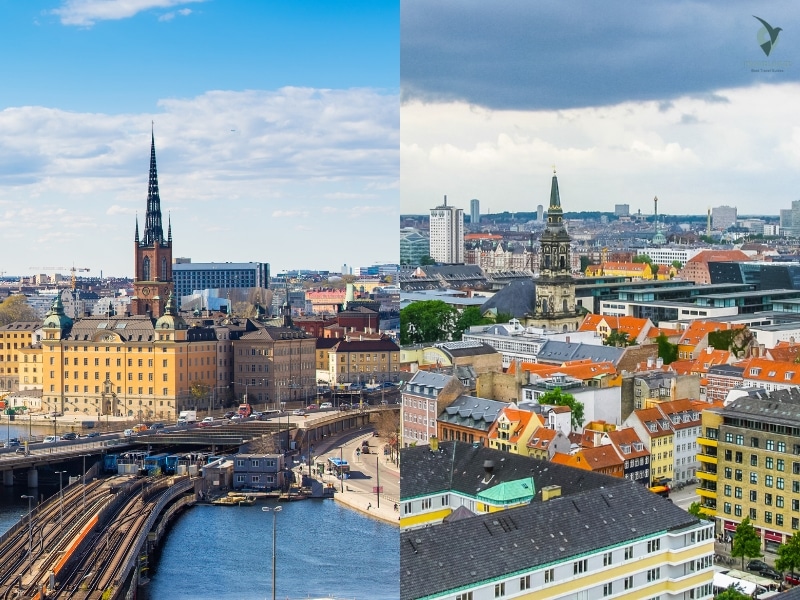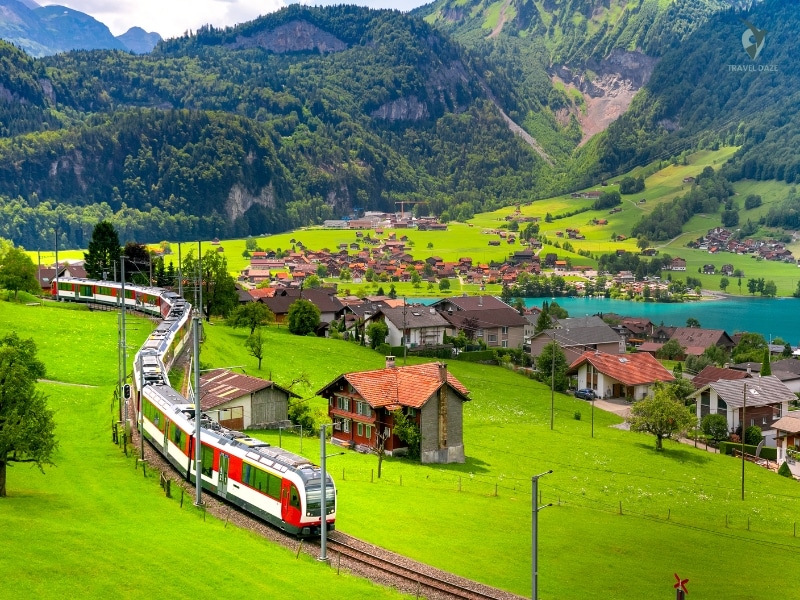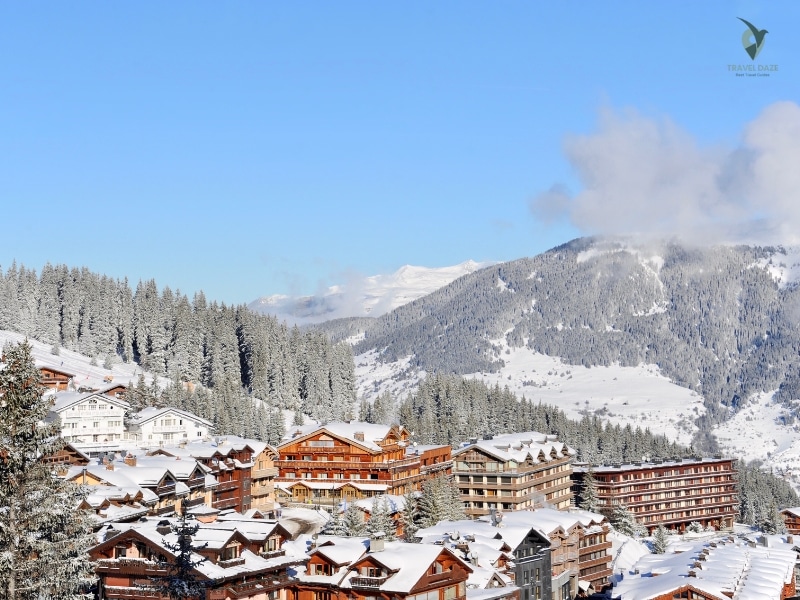Are you planning a trip to the Nordic region but unsure whether to choose one of these two neighbouring countries? I have experienced that. Both have rich Nordic history and beautiful landscapes, but they provide different experiences for various travellers. If you like lively cities or peaceful nature, knowing how they differ can help you decide more easily.
Table of Contents
ToggleDespite the resund Bridge connecting them, I discovered that their personalities are distinct. You will see changes in culture, expenses, and everyday life. This comparison is particularly useful for solo travellers. Let’s explore what makes each country unique and discover which one fits your travel preferences.
Main Points
- The two countries have Nordic origins, yet each has its own distinct cultural identity.
- The Øresund Bridge links Copenhagen and Malmö, allowing for easy travel between the two cities.
- Costs and experiences can be different, so make sure to plan based on your budget and what you enjoy.
- The exchange of people between the two nations shows their strong connection.
- Think about important things like how long people usually live and the job situation when you plan your visit.
Discovering the Cultural Atmosphere
Visiting the Nordic region allows you to experience two unique but related cultures. Although they both come from Nordic origins, their feelings are quite distinct. One enjoys a stylish modern look, while the other values the beauty of history. Let’s examine what makes each one special.

Contemporary Scandinavian Elegance
A country is recognised for its simple design and innovative mindset. Stockholm, the capital, is a centre of innovation, featuring modern architecture and a design district that launched in 2023. The idea of lagom—achieving balance in life—guides daily living here.
Nature is a significant part of its culture, with 68.7% of the land covered in forests. Stockholm has a low population density, with just 23 people living in each square kilometre. This creates a calm and open atmosphere that’s ideal for people who enjoy both city life and nature.
Warm and inviting setting
The other country feels like entering a storybook. The capital, Copenhagen, is known for its cobblestone streets and more than 1,000 preserved castles. The idea of hygge, which means cosiness and contentment, shapes how people live their lives.
With 63.4% of its land used for farming, it’s a place of natural beauty. Copenhagen has a higher population density, with 135 people living in each square kilometre. This creates a lively but cosy atmosphere that’s difficult to resist.
The beauty of cultural exchange is evident in Malmö, a city that the resund Bridge changed. It combines the past and present, making it an interesting place for visitors.
Must-See Travel Experiences
There are amazing natural sights and lovely old towns, so there’s something for everyone. If you love calm forests or beautiful bike paths, these places provide amazing experiences.
Beautiful Natural Scenery
A standout feature is the Stockholm Archipelago, a 48-hour ferry journey that passes through thousands of islands. The fresh air and beautiful water views make it a place you have to visit.
68.7% of the land is covered in forests, making hiking trails plentiful. The Gothenburg Archipelago is a beautiful place, featuring rough cliffs and calm beaches.
The small number of people means there are many peaceful places to enjoy nature. It’s ideal for anyone who enjoys outdoor adventures.
Charming towns and castles
On the other side, there are lovely towns and more than 1,000 well-preserved castles. The cobblestone streets and old buildings make you feel like you’re in a fairy tale.
Denmark has a 7,000km bike trail network that is perfect for cyclists. You can ride your bike through beautiful farmland and along stunning coastal cliffs.
Bornholm’s dramatic cliffs stand out, providing beautiful views of the Baltic Sea. The beautiful farmland, which makes up 63.4% of the area, adds to the region’s charm.
These towns have a higher population density, making them feel both lively and intimate. It combines history with modern comfort.
Important Things to Think About for Your Trip
When you plan your Nordic adventure, the practical details can really impact your trip. From budgeting to transportation, these factors help create a pleasant and enjoyable experience. Let’s explore what you should understand.

Travel Expenses
Your budget is important in guiding your journey. A metro ride in Copenhagen costs $7, while in Stockholm, the underground fare is a bit higher at $8. These little differences build up as time goes on.
The cost of living changes as well. Denmark has a cost of living index score of 107.84, while Sweden’s score is 85.37. This means that daily costs such as food and lodging may seem more expensive in one location.
The rates of national debt show how stable the economy is. Denmark’s debt is 35.3% of its GDP, and Sweden’s debt is 40.8% of its GDP. This can affect all aspects, from infrastructure to public services.
Travelling: Public Transport and Accessibility
Both countries are great at public transport, but they have some small differences. Sweden has a train punctuality rate of 95%, which makes it a dependable option for travellers. The metro system in Denmark is very efficient, offering frequent connections in Copenhagen.
The Øresundstag train is a great option for travelling between countries. It links important cities effortlessly, providing beautiful sights throughout the journey. Tickets are reasonably priced, which makes it a favourite option for day trips.
If you like cycling, both countries have strong bike rental systems. Denmark has a 7,000km bike trail network that is ideal for cyclists, and Sweden offers beautiful routes that are great for relaxed rides.
These helpful tips will guide you through your trip smoothly, allowing you to enjoy your Nordic adventure to the fullest.
Choosing Between Sweden and Denmark
Choosing between these two Nordic treasures can be tough, but it really depends on how you like to travel. If you love adventure, there are large forests and groups of islands to explore. People who love culture will enjoy the historic towns and warm atmosphere.
Both countries have impressive statistics. They have a life expectancy of 82.2 and 81 years, making them some of the healthiest nations. They are also among the top 20 for low corruption, which guarantees a safe and easy trip.
I had a moment of clarity: I understood that I didn’t need to make a choice. The Nordic Passport Union makes it easy to enjoy both experiences by crossing the 35-minute bridge. It’s beneficial for travellers.
Here’s my last piece of advice. Begin with one, then move to the next. You can enjoy the advantages of both options without the worry of choosing only one.
FAQ
Which country offers a more appealing cultural experience for travellers?
It really depends on your interests. If you enjoy modern Scandinavian design and creativity, Sweden has everything you need. If you enjoy historic charm and cosy atmospheres, Denmark is the perfect destination.
What travel experiences can I expect in each country?
Sweden offers stunning natural scenery, including forests, lakes, and the beautiful Northern Lights. Denmark has charming towns, beautiful castles, and a cosy, fairy-tale atmosphere.
Which country is more expensive to travel in, Sweden or Denmark?
Both countries can be costly, but Sweden is usually a bit more expensive, particularly in cities such as Stockholm. Denmark may not be inexpensive, but it could seem a little more affordable in comparison.
How simple is it to travel in these countries?
Both cities have great public transport systems. Sweden has efficient trains and buses, and Denmark’s small size makes biking and taking trains very easy for getting around.
What country should I pick for my trip?
It ultimately depends on what you like. If you love nature and modern design, choose Sweden. If you like history, a warm atmosphere, and lovely towns, Denmark is the perfect choice for you.





